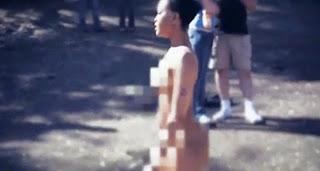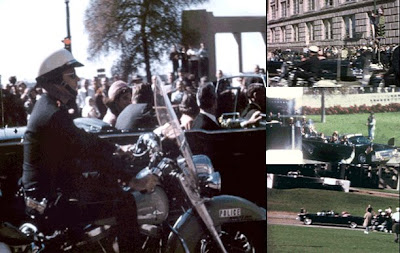
Basildon Park
It is well known that many of the grandest English Georgian country homes were built with the poisonous fruits of slavery as “King Sugar” created a class of rich plutocrats in England. However there is probably an equal number built by those who in the days of the British East India Company made their fortunes in equally dubious circumstances in India arriving home with riches beyond imagining. Indeed one part of Berkshire along the leafy Thames Valley between Reading and Abingdon became known as Nawabshire, from the number of newly enriched returnees who settled there. Basildon Park was built for Sir Francis Sykes. Born in the West Riding of Yorkshire in 1732, the son of a yeoman farmer, he left his native country to make his fortune in India. He joined the British East India Company and amassed a fortune in Bengal, at the court of the Nawab. He later became Governor of Kasimbazar and became what was then known as a nabob, a title derived from the Indian "Nawab.”


Entrance Hall
Sykes appears neither to have been well liked nor lucky in marriage. The building was delayed whilst he faced charges of corruption and he was found guilty of overtaxing for his own enrichment whilst an administrator in India, for which he was stripped of his Parliamentary seat. This controversy and attendant money woes meant that Basildon Park was never fully finished.

He appears to have been no luckier in marriage. Disraeli, who was the lover of Sykes' wife Henrietta, immortalised her along with some descriptions of Basildon and its rooms in his novel, Henrietta Temple: A Love Story and stayed in the house in 1834. Another romantic attachment of Lady Sykes was to result in her husband being immortalised in a novel, this time in a less flattering light. Lady Sykes had been conducting an affair with the painter Daniel Maclise. Her husband publicly denounced Maclise, causing an unacceptable high society scandal. As a result, Charles Dickens, a friend of Maclise, then writing Oliver Twist, based his villainous and cruel character Bill Sikes on Sir Francis.

Library
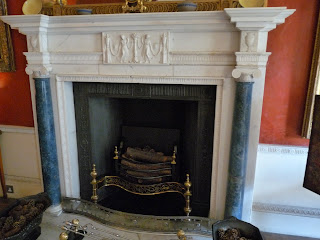
Fireplace
This beautiful Palladian mansion was built in 1776-83. The interior is notable for its original delicate plasterwork and elegant staircase, as well as the unusual Octagon Room. This impressive Georgian mansion, surrounded by glorious parkland overlooking a very scenic stretch of the Thames Valley, was lovingly rescued from ruin by Lord and Lady Iliffe in the mid 1950s, when they restored the elegant interior and scoured the country salvaging 18th-century architectural fixtures and fittings. They filled their comfortable new home with fine paintings, fabrics and furniture, which can still be enjoyed by visitors today. There are waymarked trails through the historic parkland and gravel paths around the gardens.

The house was used as location for the movie of the Jane Austen novel “Pride and Prejudice” in 2005. The house was bought by a property speculator in 1929 who attempted to sell it for demolition and rebuilding in America. Basildon Park took a starring role in the 2005 production of 'Pride & Prejudice', starring Keira Knightley as Lizzy and Matthew MacFadyen as Darcy. The 18th-century Palladian mansion 'played' Mr Bingley's house, ‘Netherfield’, a suitably grand residence for a 'young man of four or five thousand a year'.



Dining Room
The masterpiece of John Carr of York, this Palladian villa was built for Sir Francis Sykes between 1776 and 1783. It is a beautifully balanced building of warm Bath stone consisting of a main central block joined to individual pavilions by single-storey linkages.

Sykes was the youngest son of a Yorkshire yeoman farmer who made a fortune working for the East India Company on the great Sub-Continent. He held many important posts including Factor & Chief of Kasimbazara and resided at the Court of the Nawab of Bengal, until ill-health forced him to return to England in 1768. He bought Basildon from the estate of Viscount Fane, three years later. Sykes was a close friend of Warren Hastings, the Governor-General of India, who lived at nearby Purley Hall and, along with a number of other 'nabobs' resident in the vicinity, he helped give Berkshire its reputation of being the "English Hindoostan". He was created a baronet in 1781.


Basildon was inherited by Sir Francis' grandson and namesake in 1804, when parts of the house were still incomplete. Unfortunately, Sir Francis Junior inherited massive debts from his spendthrift father and, in 1838; the estate was sold to James Morrison MP, one of the richest of the early Victorian merchant princes. He was a famous art-lover who became instrumental in the setting up of the National Gallery. He exclaimed of Basildon, "What a casket to enclose pictorial gems!” His architect, John Papworth, undertook a number of sympathetic alterations at the house between 1837 and 1842, after which the family took up full residence in the best of Victorian traditions.

Crimson Bedroom
The last of the Morrisons died in 1910, after which Basildon often stood empty. It was used as a convalescent home for Berkshire regimental soldiers during the Great War, but subsequently fell into an increasing state of dilapidation. The estate was purchased by the 1st Lord Iliffe in 1928 in order to expand his Yattendon lands and the house was sold on to a George Ferdinando. This man had planned to have the place systematically demolished and re-erected in the United States! A scheme which, fortunately, never came to fruition, though many of the decorative fittings can now be seen in the Waldorf Astoria Hotel in New York where fittings and wall panels from the house form the “Basildon Room”.

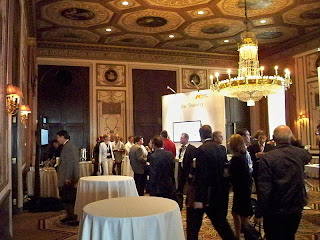
“Basildon Room” - Waldorf Astoria Hotel, New York
Miraculously, in 1952, Basildon was repurchased by Lord Iliffe's son and his new bride who set about restoring the place to its present splendour. Many fixtures and fittings were bought from other country houses whose fate was not so fortunate. When the Iliffes first saw the house in 1952 it was about to be relinquished by the Ministry of Works, further damage having been done under military occupation during the war. "To say it was derelict is hardly good enough," Lady Iliffe wrote later. "No window was left intact, and most were repaired with cardboard or plywood; there was a large puddle on the Library floor, coming from the bedroom above, where a fire had just been stopped in time; walls were covered with signatures and graffiti from various occupants. There was one army washroom, for six people at a time, but no other sign of modernisation. It was appallingly cold and damp. And yet, there was still an atmosphere of former elegance, and a feeling of great solidity. Carr's house was still there, damaged but basically unchanged."
Emerging from the house into the overgrown, rubbish-strewn park, Lady Iliffe remarked to a friend: "How sad, what a waste - and it could still be saved." He replied: "Why don't you?" At a time when building materials were still rationed and the fate of many similar houses was demolition, Lady Iliffe persuaded her husband that they should take up the challenge.


Stairwell and Lantern
The Iliffes engaged an enterprising firm of local builders and, after cutting out the dry rot, mounted an expedition to Panton Hall in Lincolnshire, where Carr had also worked. The house was to be used as a temporary store for crops before being pulled down. They were excited to find that many fittings similar to those lost from Basildon were still in place. A deal was struck with the farmer in a nearby field: anticipating a seaside holiday with his children, he gleefully accepted £100 for two lorry-loads of salvaged material, including a couple of marble chimney-pieces and 10 mahogany doors. So precise were Carr's measurements that the Panton doors fitted the Basildon sockets exactly.
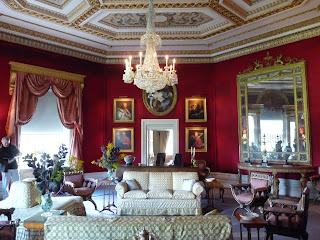
Octagonal room
The first floor was designed to be a piano Nobile (meaning literally a "noble floor"); as its name suggests, it contains the principal rooms of the house. During the 1770s, when Basildon was built, a domestic and architectural movement from formality towards informality was in progress. Thus, while the exterior of Basildon is pure symmetry, this symmetry is not reflected in the interior layout of the rooms as would have been the case just a few years earlier.

The South Pavilion and corps de logis. In 1978, the South Pavilion (the former laundry) was converted into a private house for Lord and Lady Iliffe following their donation of the main house to the National Trust.
Lord Iliffe died in 1996 and Lady Iliffe in 2007 having lived in one of the pavilions of Basildon Park after bequeathing the house the rescued from certain ruin to the National Trust in 1976. One of the gratifying senses for visitors today is that the house has been kept as their family home with their effects and the 1950’s kitchen and modern bathrooms so visitors get a real sense of how it was used as a family home. Lord Iliffe was from the family which owned the Birmingham Mail and Coventry Telegraph. This Warwickshire connection is seen in the Sutherland Room; it is currently used to display some of the studies by the 20th-century artist Graham Sutherland for his tapestry "Christ in Glory" at Coventry Cathedral. Graham Sutherland was a friend of the Iliffe’s and there are portraits by him of Lord and Lady Iliffe in the house. The tearooms are in the ground floor of the Corps de Logis and they contain interesting and charming eastern murals of oriental scenes from India, Burma and Cambodia which I had thought were a modern addition but are in fact rather charming 19th Century originals in what would have been the servants hall.

Woodland Trail
The volunteers in the house are invariably helpful and friendly but the house itself is not very accessible with stairs both up to the entrance level and up to the first floor bedrooms. There are good toilet facilities (including disabled) both in the main house and in the stable buildings by the car park. The car park and entrance are some 400 yards from the house in the original stables and there you will also find an excellent gift shop, plant sale and second hand bookstore. The approach to the house is along a 400 yard woodland walk with plenty of seats on the way, charmingly carved out of logs in the shape of woodland creatures. There is also an electric buggy for reduced mobility visitors which will bring you along the approach road and blue badge holders can drive their cars up to the house on request. The gardens and the parklands provide lovely vistas of the leafy and scenic stretch of the Thames Valley and Basildon Park’s location gives it the best view.
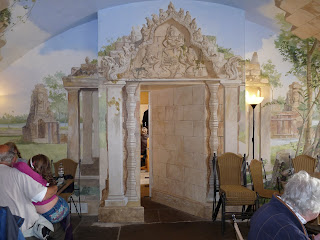

Servants Hall
As well as visiting a superb property Basildon Park allows the visitor to share in the labour of love which rescued this gem and that love is continued by the National Trust and the friendly volunteers to this day. You can easily set how it served as the setting for Darcy and Elizabeth's first meeting at 'Netherfield' in the new film version of Pride and Prejudice, as well as the sumptuous ballroom scenes. As Mrs Bennet said 'If I can but see one of my daughters happily settled at Netherfield,'

Pride and Prejudice at Basildon
Pride & Prejudice is a 2005 film based on the popular Jane Austen novel of the same name. This second major motion-picture, Academy Award-nominated version was produced by Working Title Films, directed by Joe Wright and based on a screenplay by Deborah Moggach. It was released on September 16, 2005 in the UK and on November 11, 2005 in the US.
It was filmed entirely on location within England in the summer of 2004 and used several stately homes, including Chatsworth House in Derbyshire and Wilton House in Salisbury (as Pemberley), Groombridge Place in Kent (as Longbourn), Basildon Park in Berkshire (as Netherfield Park) and Burghley House in Cambridgeshire (as Rosings - the adjacent town of Stamford served as Meryton). The Temple of Apollo and Palladian Bridge of Stourhead also appeared (as set in the Gardens of Rosings)
Lower Basildon, near Reading, Berkshire RG8 9NR
Telephone: 0118 984 3040
www.nationaltrust.org.uk/basildonpark
Between Pangbourne and Streatley, 7ml NW of Reading, on W side of A329; leave M4 at exit 12 and follow A4 to Newbury, then brown NT signs to Pangbourne. If coming from Oxford take A34 ring road and leave at Henley/Reading junction, then turn right at roundabout for Wallingford bypass, cross river and take first left on to A329.
By train
Pangbourne 2½ml; Goring & Streatley 3ml
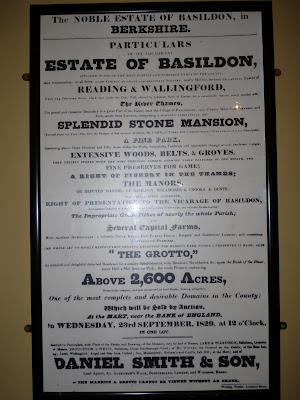
Bill of Sale for the house and contents c. 1830
For more on Architecture and Design see ARCHIBLOGS in the Blog sidebar>>>>>>>>>>>>>>.














